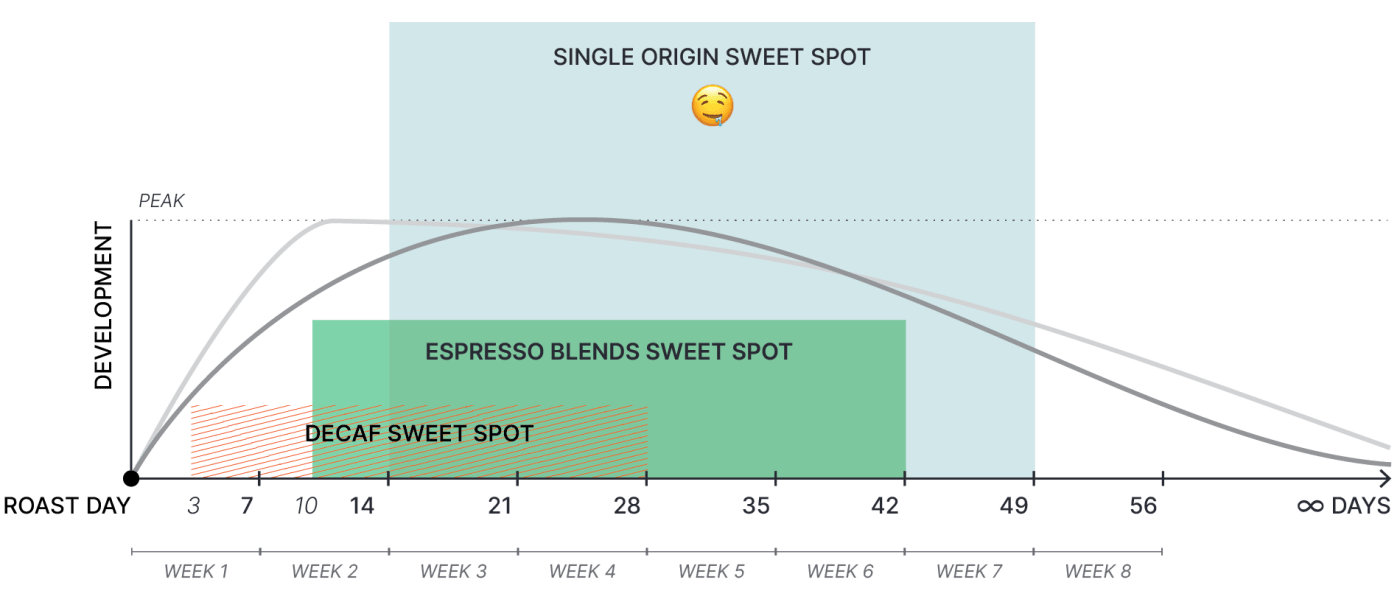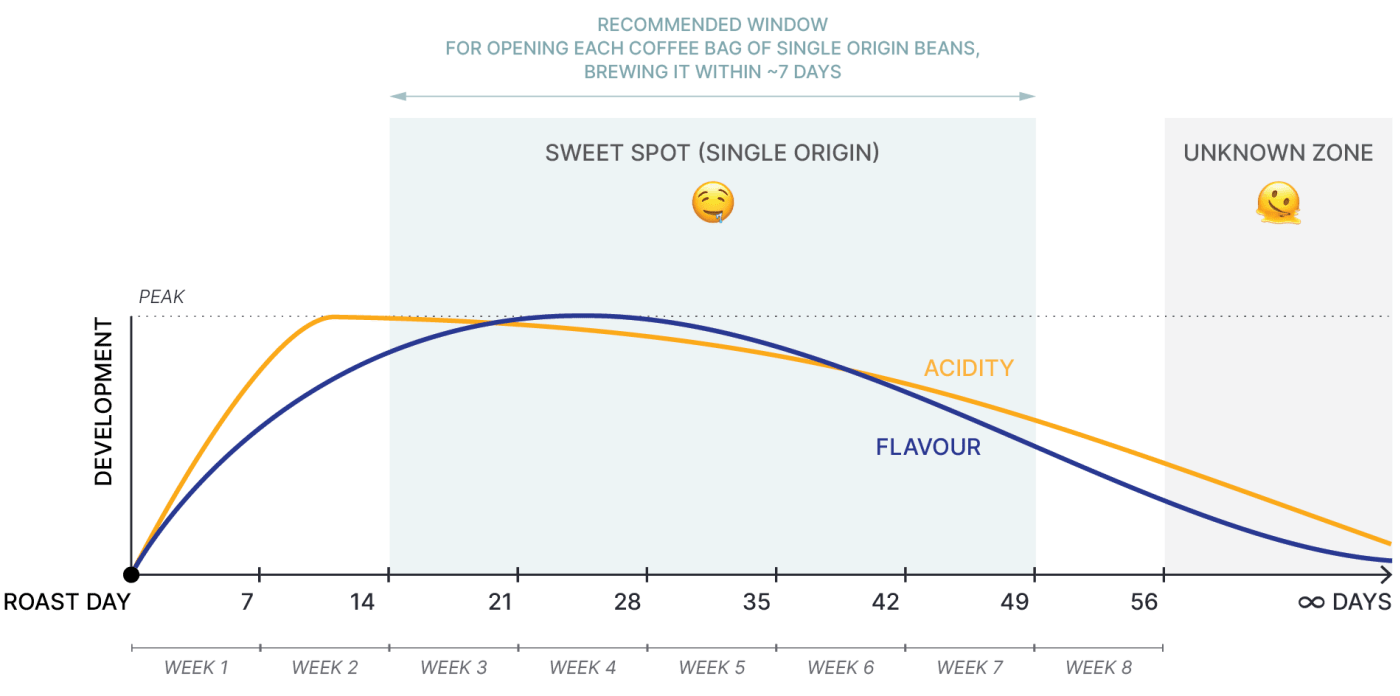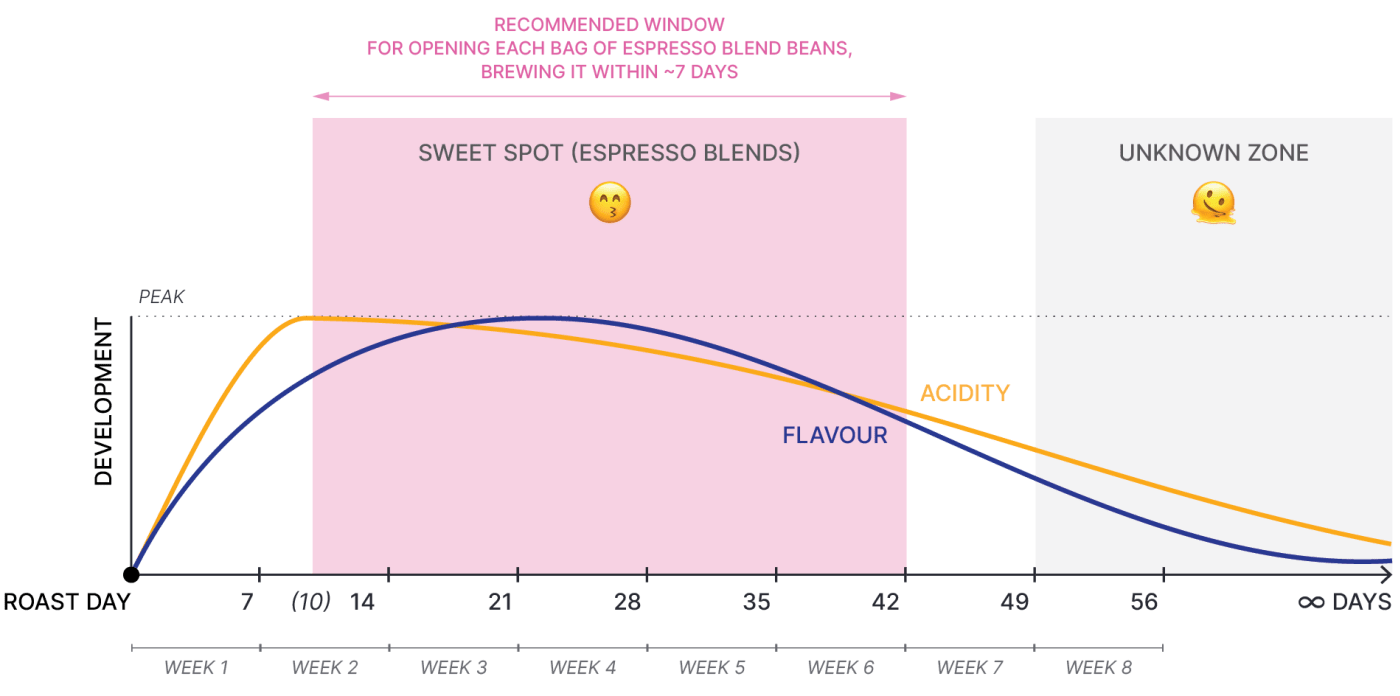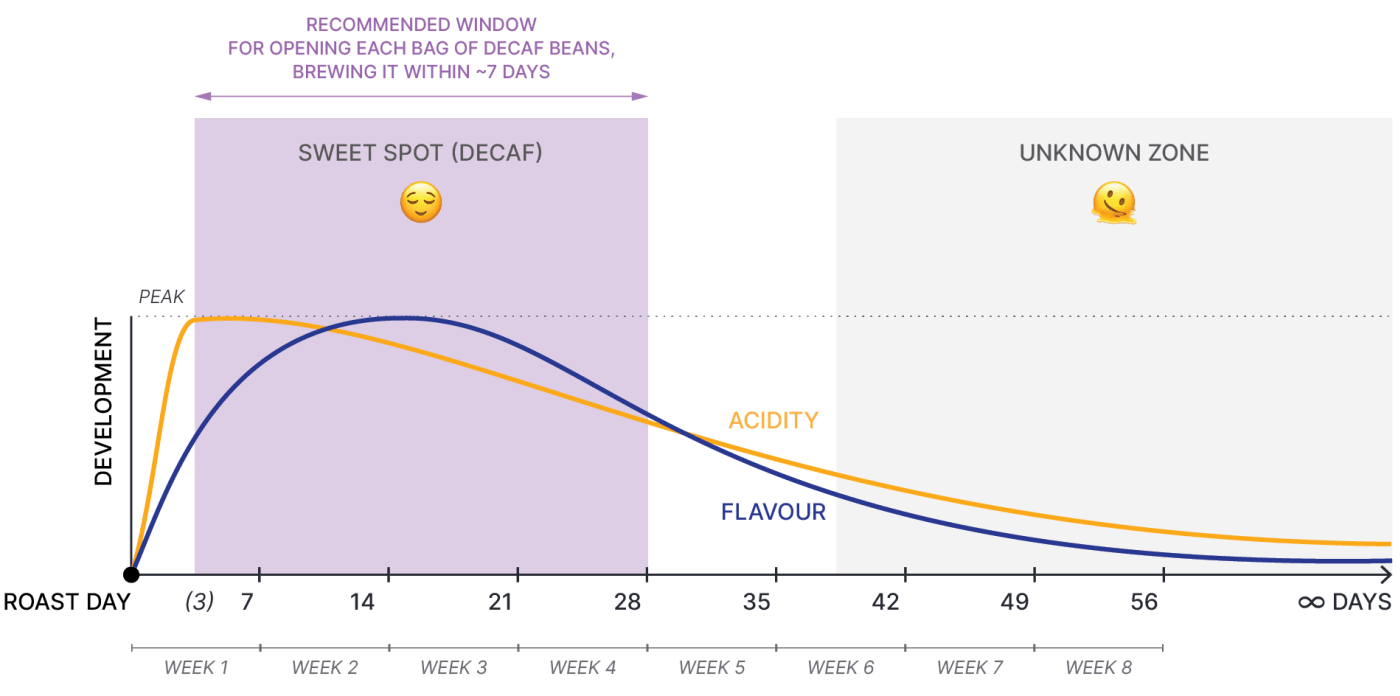TL;DR: Waiting before opening your bag of whole coffee beans is beneficial for developing peak flavour and acidity. Our recommended brewing window is:
Omni roast (most of our single origins): 15-49 days post-roast
Espresso roasts (our espresso blends): 10-42 days post-roast
Decaf: 3-28 days post-roast
Pre-ground: start brewing immediately.
These are only suggestions for best results. Brewing outside these doesn’t mean the coffee won’t be enjoyable!

FRESHNESS IS NOT ALWAYS BESTNESS
There’s a common misunderstanding about the freshness of coffee. Many people think it’s best to consume it immediately after—or as close as possible to—the day it was roasted.
While this idea may be true for some food products, it’s not for coffee beans. Waiting for some time before opening the bag and starting to brew is beneficial for developing the best flavours and acidity.
PATIENCE IS A VIRTUE
During the roasting process, the green coffee reaches very high temperatures and releases numerous aroma compounds and CO2 (carbon dioxide gas). Some CO2 stays trapped inside each bean and will naturally release during the following hours/days/weeks.
Right after roasting, the beans are packed and sealed inside each bag. The bag material and the thermal sealing create a controlled environment, protected from our oxygen-rich atmosphere, in which the CO2 release happens slowly and uniformly. Maintaining these conditions for some time—the aging or resting period—will lead to the development of the peak taste profile.
THE TYPICAL LIFE OF COFFEE
During the first days after roasting, acidity and flavour build rapidly. Coffee can definitely be enjoyable during this window, but we feel it often tastes wild, gassy and unbalanced (there is still some unreleased CO2 within the bean).
Soon after, the acidity hits a maximum and gradually starts to drop; simultaneously, the development of flavours reaches a steady peak. Here is the window where we usually find the perfect balance where the magical cup exists—the sweet spot.
Eventually, the flavours and acidity decay at a faster pace, becoming softer and muted as the weeks pass. It doesn’t mean the coffee can’t be enjoyable, but we’ve found it generally starts losing its character and brightness from this point on.
So how long should we wait until opening each bag and get brewing?
BEFORE RECOMMENDING ANYTHING…
Some things to consider before explaining our recommended brewing windows:
Our guidelines are only a reference. We believe that coffee enjoyment is subjective; what feels good for someone may not be the same for another. So take these as a starting point, but feel free to mix things up and experiment to find what pleases you the most.
Each coffee behaves differently. Varietal, process, packaging at origin, transport, roasting… Many variables determine the longevity of each coffee lot. Coffee aging is fluid, and so are our recommendations.
Homebrewing is not a squared science. Likewise, infinite variables determine how each coffee will evolve in every home: temperature, humidity, storage… Our guidelines are based on our cafe and personal experience, so again, please remember that they’re not a strict protocol or scientific study!
Length of use. One of the most impactful variables is the time a homebrewer takes to go through all the beans. When the coffee bag is open, the beans are in contact with our oxygen-rich atmosphere and start oxidising quickly—not good. So, the longer a bag lasts, the more aged the coffee will be towards the end.
Our ideal preference is to go through the whole coffee bag within ~7 days of opening the bag (we like fresh coffee!), and our recommendations are based on this assumption. However, we know this schedule is not everyone’s, so here are a few ideas/actions:
- Consider getting smaller bags more often.
- Portion into small quantities that lasts for a week’s worth of brewing (we highly recommend vacuum coffee jars or vacuum home-packing—learn more about storage here).
- If the above is too nerdy and you’re not so dedicated, consider shifting our recommended brewing window a few days earlier to account for the faster oxidation.
Ground coffee plays in a different league. Because of the oxygen factor, the lifespan of ground coffee is significantly shorter than whole beans. We recommend you start brewing it as soon as you get it. Even better, get a home grinder if that’s an option—you won’t regret it.
Any coffee is better than no coffee. If you don’t have access to properly aged beans, and really want a coffee, just brew it! Once again, the following are just guidelines for peak taste; brewing outside these doesn’t mean the coffee will be bad or unenjoyable.
BREWING WINDOW RECOMMENDATIONS
Singles, blends and decaf behave differently. We recommend brewing our omni roasts (most of our single origins) within days ~15-49 post roast-date.

Our espresso blends are roasted for espresso, so a bit darker than our omni single origins. This makes them reach their peak and decay faster. That’s why we recommend brewing our espresso roasts (espresso blends) within days ~10-42 post roast-date.

Decaffeinated coffee’s lifespan is even shorter (no matter the roast style), possibly due to the chemistry process. We recommend brewing our decaf within days ~3-28 post roast-date.

FURTHER READS
If you still wanna nerd out more about this topic (respect!!), here are a couple of links:



